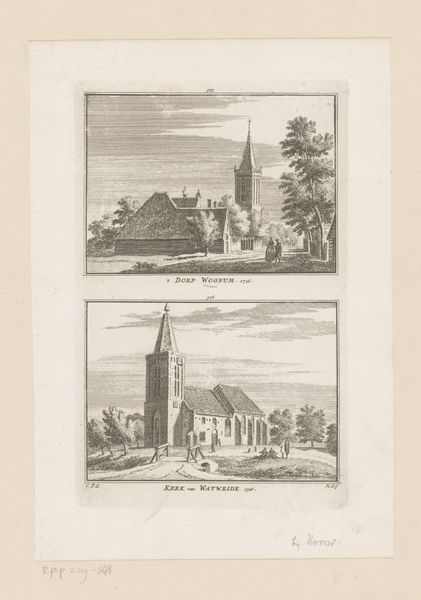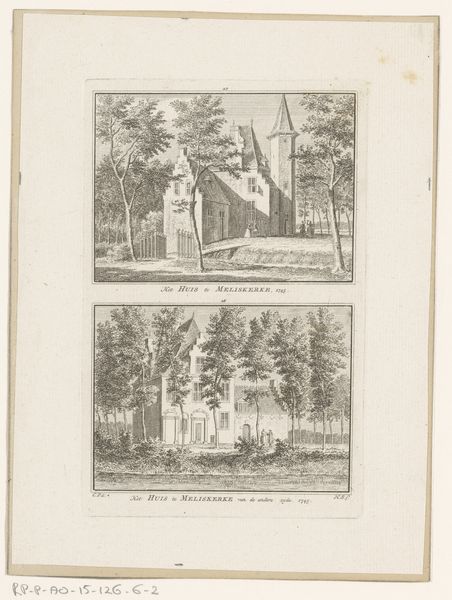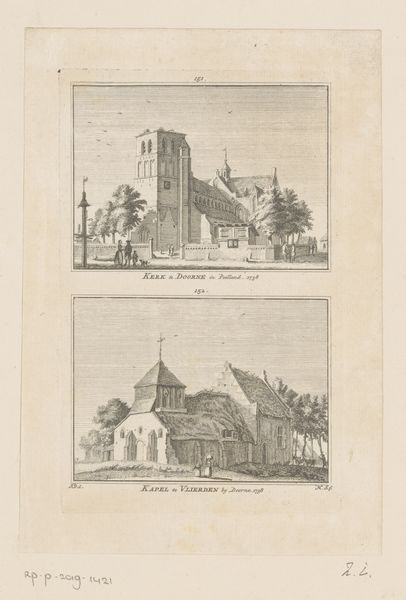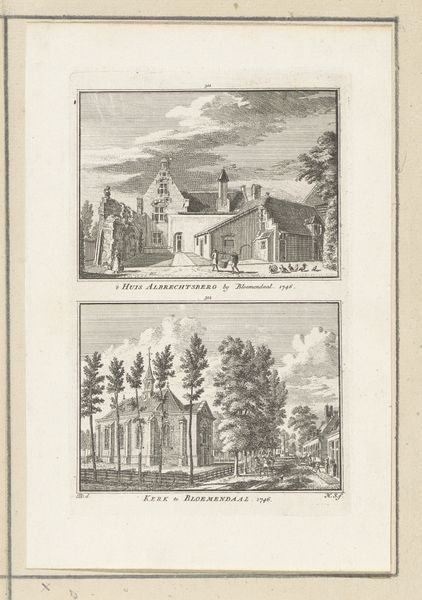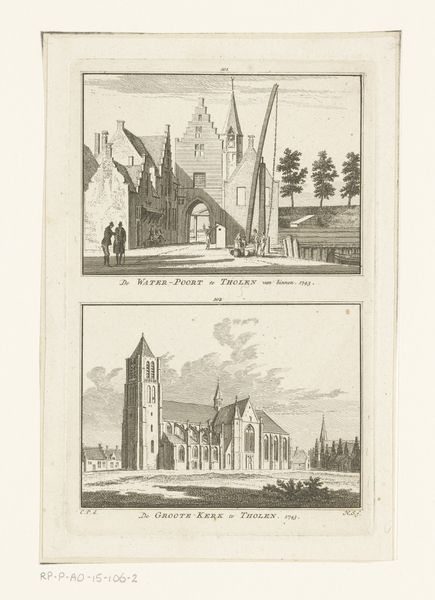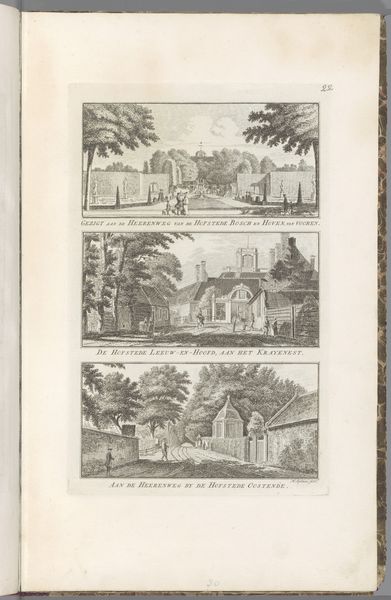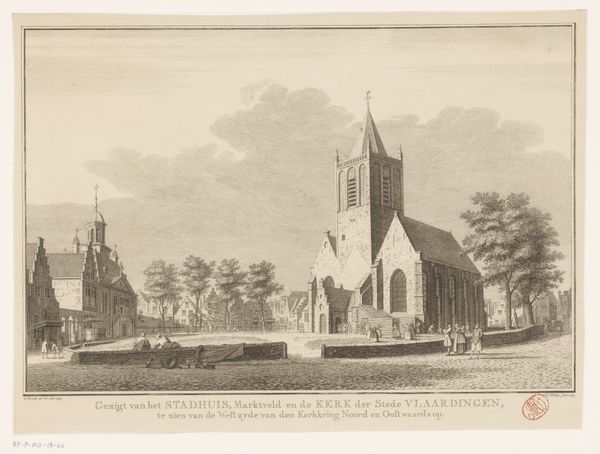
Gezicht op Kasteel Aldegonde en gezicht op de kerk te West-Souburg, 1743 1754 - 1792
0:00
0:00
hendrikspilman
Rijksmuseum
Dimensions: height 166 mm, width 110 mm
Copyright: Rijks Museum: Open Domain
Editor: This is Hendrik Spilman's "Gezicht op Kasteel Aldegonde en gezicht op de kerk te West-Souburg, 1743," a print made with engraving on paper sometime between 1754 and 1792. The contrast is really striking! What's your read on this, seeing them together like this? Curator: Let's think about what it means to reproduce these structures via printmaking in the 18th century. Spilman isn’t just representing a castle and a church; he’s participating in a burgeoning visual economy. Who had access to these images? How did the act of engraving, this meticulous, reproducible labor, affect the value, the very perception of these buildings? Editor: So, less about the buildings themselves and more about their dissemination? The means of production influencing our understanding? Curator: Precisely. Consider the material differences between a hand-drawn sketch only a few could view and an engraving capable of wider distribution. This shift transforms architecture from unique, imposing structures to commodities circulated within a consumer culture. Think about the social hierarchies at play: who could afford these prints, and what did possessing them signify? What labour was required to create the copperplate, paper and final image? Editor: It brings a whole new dimension. I was just thinking about composition, but it is so much more that that! What sort of statements can we draw based on its materiality and its means of production? Curator: The controlled, repeatable lines of the engraving reflect an Enlightenment emphasis on order and reason, while simultaneously making those architectural visions accessible commodities for a specific class. Each impression carries with it the embodied labor of the engraver and all materials required, mediating our connection to the place. How might the image impact social identity or perhaps even be used as a social tool? Editor: That really challenges the idea of just viewing the aesthetic qualities of this print. It’s about understanding it as part of a larger economic and social machine. Thanks for the lesson! Curator: Indeed! By engaging with the material conditions of its production and circulation, we get a clearer sense of its cultural work. This isn’t just art; it’s a commodity with embedded social values and tangible labour.
Comments
No comments
Be the first to comment and join the conversation on the ultimate creative platform.

